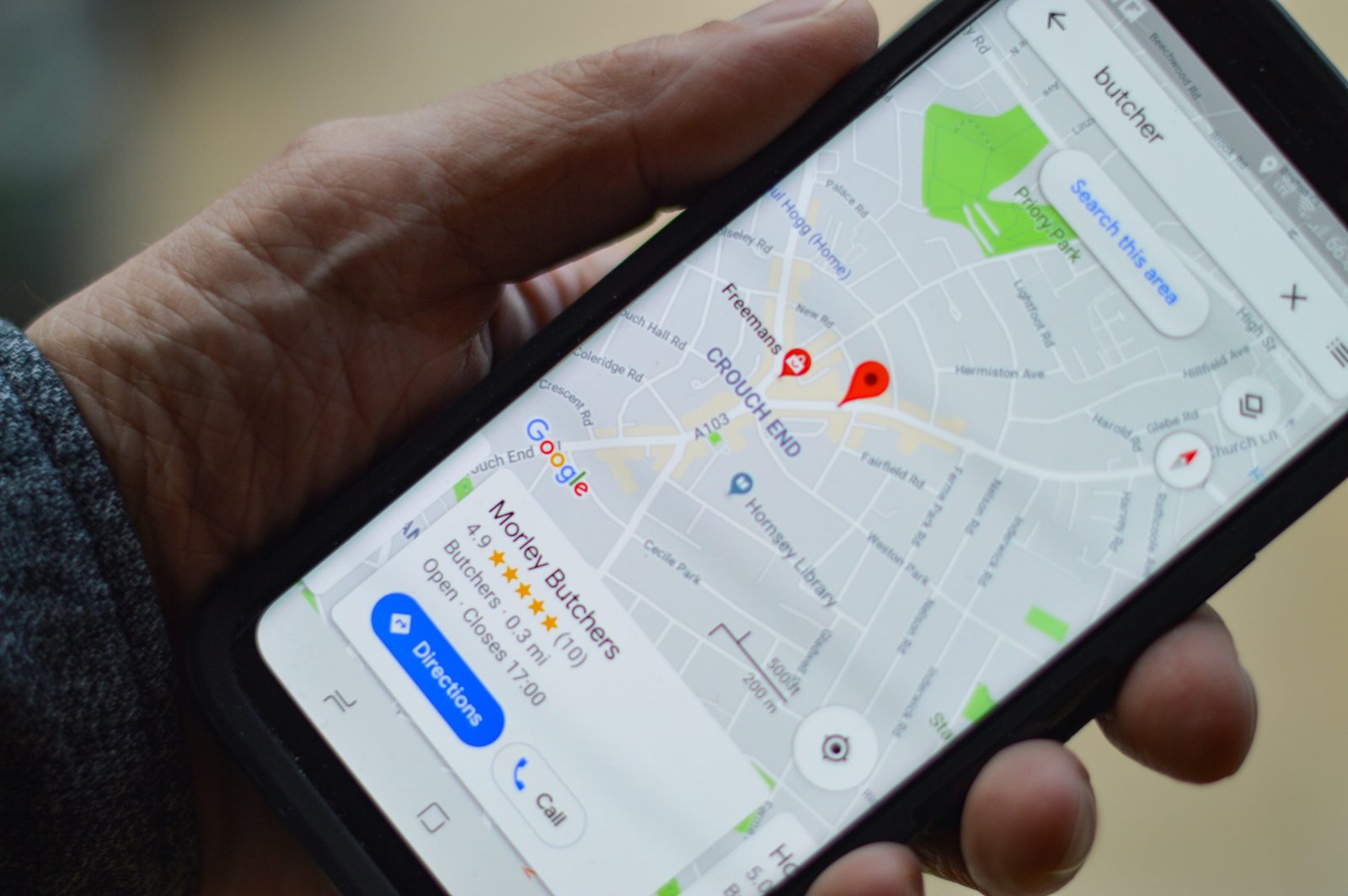Mon - Fri (10:00-22:00)
Creating a Marketing Plan for your Small Business: Strategies and Tactics
by Triune Digitals
- 14 min read
Creating a marketing plan for your small business is a pivotal step toward achieving sustainable growth of your business. This comprehensive guide illuminates the path, providing insights into crafting strategies that resonate, engage, and drive success in today’s dynamic market landscape. Explore the art of aligning your business goals with innovative marketing tactics to carve a distinctive identity and captivate your target audience.
Key Takeaways
Crafting a small-business marketing plan involves a summary, SMART goals, target market, inbound marketing, and competitor analysis.
Content marketing, branding, email lists, SEO, PPC, social selling, and PR drive small business growth.
Frequent plan updates are vital for staying aligned with trends and goals, ensuring relevance and effectiveness.
What is a Marketing Plan?
A marketing plan functions as a strategic guide, outlining how you engage with your target audience both online and offline to effectively promote your products or services. The complexity of marketing plans varies, ranging from basic to intricate, depending on your desired objectives. A marketing strategy outlines the outreach and public relations activities that will be implemented over time, as well as how the organization will measure the impact of these initiatives. The roles and elements of a marketing plan encompass:
- Conducting market research to aid in determining prices and welcoming new competitors to the market.
- Messages that are tailored to specific populations and geographic areas.
- Venues for product and service promotion include digital, radio, the Internet, trade journals, and a combination of these venues for each campaign.
- Metrics for measuring the outcomes of marketing operations, as well as reporting timetables.
Why it’s Important To Have a Marketing Plan for Your Small Business
Understanding how to start a small business involves recognizing the vital role of a marketing plan. It guides you in fulfilling market needs, differentiating from competitors, and targeting the right audience. This plan provides direction, resource allocation, brand consistency, and adaptability, ensuring systematic and successful marketing for business growth.
A marketing plan plays a vital role for any small enterprise. Essentially, it assists in recognizing the market requirements that your product or service fulfills, distinguishing your offering from competitors, and identifying your target audience. These plans also function as a navigational tool for your sales tactics, brand identity, and overall business development. This is crucial for effectively conveying your brand message to your desired audience.
A marketing plan is crucial due to its ability to provide direction, focus, and strategy for a business’s marketing efforts. It helps target the right audience, allocate resources efficiently, maintain brand consistency, adapt to changing dynamics, gain a competitive edge, measure progress, plan for the long term, minimize errors, and enhance communication. In essence, a marketing plan ensures systematic, purposeful, and effective marketing, fostering business success and growth.
How to Develop Marketing Plan for Your Small Business
Create an executive summary
View marketing campaigns as interconnected elements, not standalone functions. Marketing is akin to narrating your brand’s tale to customers; akin to any story, it requires consistent tone and characters. An overview outlines your year-long marketing objectives and aids in unifying campaigns.
While setting marketing goals, ensure they are SMART: Specific, Measurable, Achievable, Relevant, and Time-bound. These goals should synergize for internal and external coherence, crafting a uniform narrative that precisely communicates your message and builds upon preceding chapters.
Identify your target market
Identify your clientele and their desires. Take into account their age, gender, whereabouts, and preferences. The greater your understanding of your intended audience’s characteristics, the simpler it becomes to create a marketing communication that strikes a chord.
Enhancing your familiarity with your target audience is effectively achieved through market research. This involves surveys, focus groups, or studying your competitors.
Distinguish your brand through the utilization of inbound marketing strategies
Incorporating SEO services, inbound marketing employs internal tools like content marketing, social media engagement, and SEO to primarily engage customers online. Content marketing encompasses informative blog posts, interviews, podcasts featuring industry experts, or supplemental guides on product usage.
Strong content enhances search engine rankings, driving more traffic to your online platforms. By disseminating this content to a broader audience, you further boost search engine rankings.
Enhancing visibility and online presence, SEO for small businesses is a potent tool. By optimizing website content, keywords, and backlinks, businesses can rank higher in search results. This boosts organic traffic, attracting potential customers and fostering growth opportunities.
Identify competitors
Irrespective of the uniqueness of your product or service, there’s always competition vying for your target customers’ spending. Small business teams often overlook in-depth competitor analysis or identifying companies beyond their industry that possess the potential to attract customers. Familiarizing yourself with competitors, understanding their key strengths, and predicting their responses, such as price reductions or heightened communication, aids in formulating strategies to counter such setbacks.
By actively seeking out these rivals, you can create strategies to set your business apart, offering customers what they might lack from your competitors. Examine your competitors’ operations to discover opportunities for differentiation, allowing your business to stand out and guide your target audience towards your offerings.
State your brand position for your target customers
Finally, your brand and its representation to customers are your most powerful asset. You should craft a straightforward sentence describing how you will fulfill customer requirements and surpass competitors.
Set your marketing budget
Outline all of the costs associated with your marketing strategy and evaluate how to best allocate your funds among them. You will probably require personnel and resources, along with an advertising budget. You might also consider setting aside products for influencers or allocating funds for participation in a live event.
Devise and initiate your marketing campaigns
After establishing a budget and crafting a marketing plan, the next step is to strategize and initiate your campaigns. Depending on your financial allocation, you can diversify these campaigns, combining paid digital advertising, traditional advertising, social selling and content marketing.
A streamlined, startup marketing plan can encompass these key elements:
- Brand Strategy: This defines your company’s identity, its target audience, and what sets it apart from rivals. It serves as the basis of all marketing efforts, positioning your company within the market landscape.
- Content: This represents your company’s messaging about its products, values, and perhaps larger societal contributions. Content manifests in various formats, from Instagram posts to blog entries to billboards.
- Advertising: This avenue spreads your brand and content to a broader audience. It might involve strategic keyword bidding in search engine marketing, boosting social media posts for wider reach, or securing pre-roll ad slots on podcasts.
Monitor outcomes and implement necessary changes
Not every marketing endeavor achieves success. Be prepared to observe which marketing messages resonate and which don’t, along with identifying the most effective channels.
Marketing is a continuous procedure, rather than a single, initial arrangement. It demands constant tracking of essential metrics and adapting as you gain insights into your target audience’s preferences, media usage, and purchasing behaviors.
Business Strategies For Small Businesses
Use content marketing to cultivate natural website traffic
Content marketing necessitates significant initial effort, yet once you commit to crafting exceptional content, its longevity becomes evident.
Producing blog posts addressing Google search queries can generate organic inbound traffic to your website. The more your website surfaces in search results, the higher the likelihood of visitors landing on your site. Consequently, these visitors will engage with more of your content, develop greater trust in your brand, and gain increased exposure to your offerings.
Thankfully, with the implementation of well-executed SEO services and a well-designed content marketing strategy, you can significantly augment your organic reach
Create a cohesive identity for your brand
Incorporating effective small business branding involves utilizing internal resources to create a cohesive identity. Even without the financial means to engage a professional brand consultant, you can leverage your internal assets to establish a cohesive identity for your business. This encompasses crafting a logo, defining a color palette, selecting a font collection, devising a slogan, and formulating a consistent description of your products or services.
Apart from cultivating an air of professionalism, this undertaking aids in synchronized marketing endeavors. The objective is to attain a uniform appearance and message throughout your diverse marketing and distribution platforms.
Build an email marketing list
Utilizing email marketing is a potent method for businesses to connect with their target audience. By sending targeted emails, you can nurture customer relationships, share valuable content, and promote products or services. Building an email list through sign-up forms and incentives allows you to reach a receptive audience, making it an effective and cost-efficient way to drive engagement and conversions.
Furthermore, you can entice individuals to join your email list by providing incentives, like a complimentary offer such as a discount code. Once your email list accumulates several hundred subscribers, you can embark on dispatching monthly newsletters or promotional emails.
Invest in search engine optimization (SEO)
Search engine optimization involves enhancing your website’s visibility on search engine results pages (SERPs), which is crucial for driving increased organic traffic. To optimize your site, conduct thorough keyword research to identify popular search terms. It’s essential to ensure your website has a logical structure and user-friendly navigation. Additionally, crafting valuable, relevant content tailored to your target audience is pivotal. Creating an SEO-friendly website involves improving visibility on search engine results pages through keyword research for small business, logical structure, user-friendly navigation, and tailored valuable content for your target audience.
Execute pay-per-click (PPC) advertising campaigns
PPC advertising involves online promotion in which you are charged per click on your ad. This approach proves valuable for driving website traffic, particularly when focusing on a particular keyword. Platforms like Google, Facebook, Instagram, and others can host PPC ads effectively.
Social selling
Social selling entails a sales approach that leverages social media platforms to establish connections with potential customers, aiming to ultimately sell products or services.
SMM services entail a sales approach utilizing social media platforms to foster connections with potential clients, aiming to sell products or services.
It involves platforms like LinkedIn, Twitter, Facebook, and Instagram to interact with prospects, offer them valuable content, and establish trust and credibility. Social media marketing centers on relationship-building and delivering value to potential customers before proposing a purchase.
Public relations campaigns
A PR campaign essentially encompasses a series of meticulously planned and strategically executed endeavors aimed at achieving a distinct goal for a brand, such as garnering publicity, all within a predetermined timeframe.
These planned initiatives might range from launching out-of-home advertisements (OOH) to orchestrating brand activations. Likewise, the goal could encompass elevating brand recognition, securing publicity, improving brand reputation, among other objectives.
The ultimate aim of each public relations campaign is to thrust your brand into the limelight and stimulate discussions about it, spanning both online and offline platforms.
Customer acquisition (Gaining new customers)
Customer acquisition represents the culmination of the marketing funnel. You possess an understanding of your customer base, and their interest in your offering is evident—you merely need to guide them towards the point of purchase.
For an e-commerce enterprise, you have the opportunity to enhance your product page’s sales potential. This involves ensuring essential purchase details are displayed prominently alongside clear visuals and a conspicuous buy button.
Sustaining customer loyalty
After gaining customers, retention involves consistent engagement and repeat purchases. Reengagement tactics like email newsletters and push notifications drive ongoing sales. Improving customer interactions, quick responses, and personal communication is vital. Small businesses strive to attract and retain new customers for long-term loyalty. Incentives for customer referrals and loyalty programs, whether digital or physical, bolster loyalty. Monitoring behavior helps identify churn risk and potential customer shifts.
Final Thoughts
A well-crafted marketing plan is pivotal for small businesses, offering direction, differentiation, and audience engagement. It allocates resources, maintains consistency, adapts to change, and brings measurable results, fostering growth. Start with an executive summary, view marketing holistically, research your audience, use inbound marketing, and analyze competitors. Employ branding, content, SEO, and PPC for visibility, leverage social media and PR. Acquire customers through engagement, retain through reengagement and loyalty. Implementing these strategies cultivates brand presence and customer loyalty, ensuring success in a competitive landscape.
FAQ
Is creating a marketing plan for your small business is crucial?
Yes, a marketing plan is crucial for a small business. It provides a structured approach to identifying market needs, targeting the right audience, and differentiating from competitors.
What methods can I use to gauge the effectiveness of my marketing plan?
To measure the success of your marketing plan, track KPIs like website traffic, conversion rates, social media engagement, and ROI. These metrics provide insights into the effectiveness of your strategies and guide improvements.
What are the best ways to identify a target market for the marketing plan?
To identify a target market for your marketing plan, conduct thorough market research. Analyze demographics, preferences, behaviors, and needs of potential customers. Utilize surveys, focus groups, competitor analysis, and social media insights to gain a deep understanding of your audience.
How often should I update my marketing plan?
Marketing plans should be periodically reevaluated on a quarterly basis to ensure their efficiency, relevance, and adaptability to evolving market dynamics.


